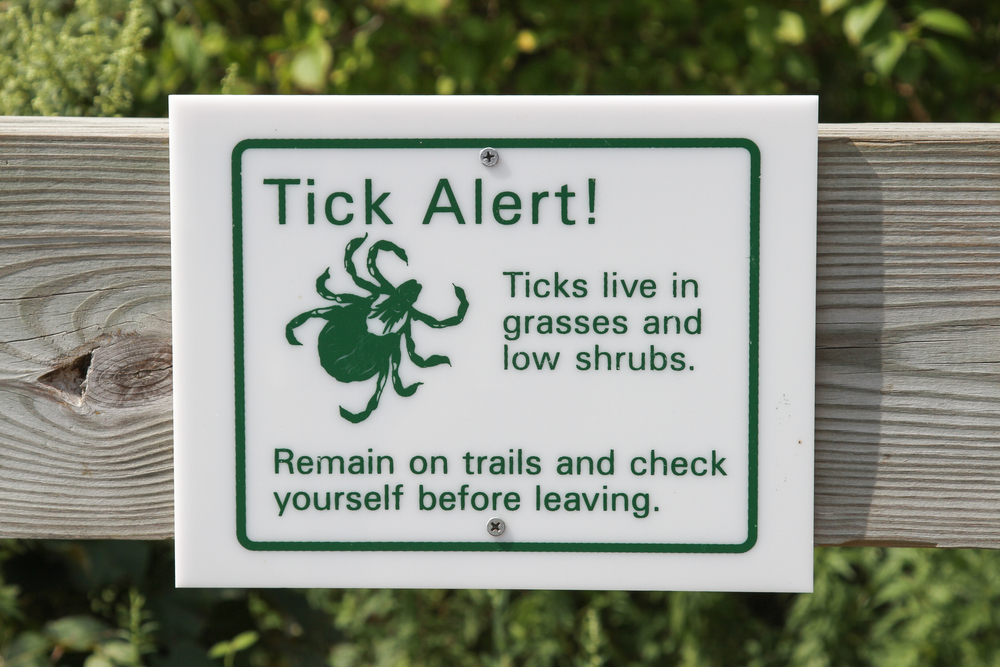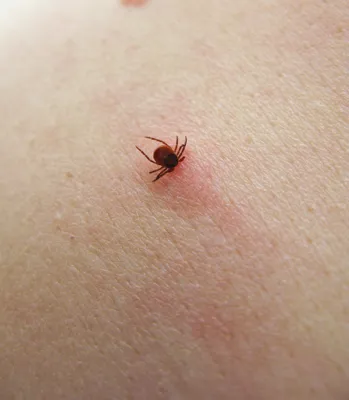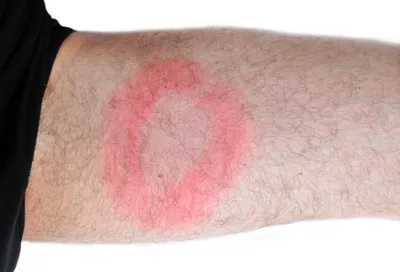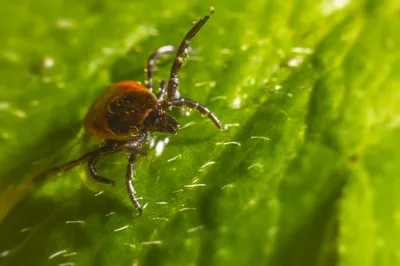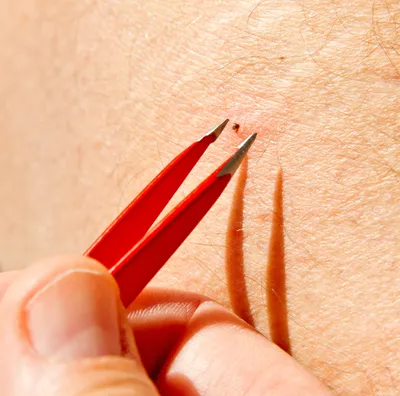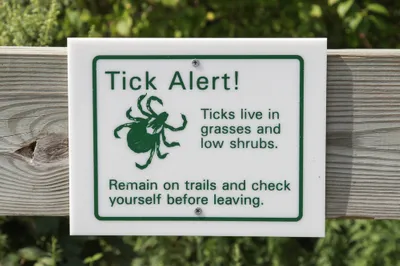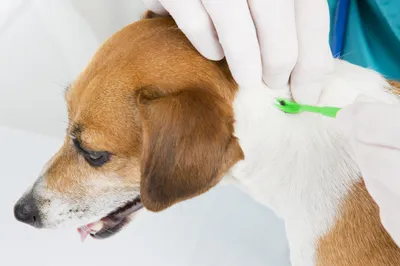The number of people with Lyme disease has been growing steadily and government health officials are focused on creating awareness of the disease and how to protect yourself. Lyme disease is usually contracted through an infected deer tick and many people who are bitten don’t show any symptoms right away. It can take from weeks to years to show any signs of the disease and symptoms vary greatly. Lyme disease can cause mild flu-like symptoms, and also more serious reactions such as joint pain, muscle weakness, and confusion. Although cases have been popping up world-wide, there’s actually a lot you can do to lower your risk of becoming infected.
Lyme disease is easily transmitted, so it’s vital to be aware of the following Lyme disease protection tips…
1. Check Your Body
Ticks that carry Lyme disease are very small and often hard to see unless you’re looking. If you’ve ever had an outdoor pet, you’ve likely checked its fur to see if there are any ticks or other bugs on it. For protecting you and your family against Lyme disease, perform a thorough inspection of the whole body and look through and in hair after coming in from the outdoors. This is especially important if you’ve been in grassy, bushy, or wooded areas, and places your local city or region have identified as risky for ticks.
Use a mirror or ask someone else to check your back and areas you can’t see easily. Don’t forget to look in creases at your joints and your armpits, as ticks may hide out and can be missed. If you do find a tick and you’ve removed it, make sure to look really closely at the rest of your body for any others. Keep in mind that finding one tick might mean there are others on your body or clothes, so be even more thorough as you do the rest of your check.
2. Know What to Look For
Ticks are small so knowing what to look for both in regards to the tick and tick bites is important. A tick can look like a piece of dirt or a small blood blister. They start out between 1-5mm in length, but even when they’re at full size they’re hard to recognize as an insect. You might see a few tiny legs on the sides of the body, but depending on what stage the tick is at it could just look like a dark spot. Blacklegged (deer) ticks carry Lyme disease and when fully engorged, their bodies might look white.
The tick bite itself isn’t what will draw your attention, though you should take stock of any new bites, that appear. Lyme disease can cause a very distinguishable rash that looks like a target—a red spot in the middle with a red ring around it. Not everyone will experience a rash, but it’s one of the easiest ways for a doctor to figure out you were infected with Lyme disease. And like many other diseases, a diagnosis may help protect you from any serious or long-term effects of the infection.
3. Take Showers
Ticks start out really small and so they can be hard to spot. They grow as they feed, but they remain small to the naked eye and getting them off of you is important. They usually don’t attach themselves through biting you right away, so to lower your risk and help protect yourself from Lyme disease, take a shower immediately after being outside in wooded and grassy areas. A shower should rinse off any loose ticks that are on your body. It’s recommended that you take a shower within two hours of coming in from outside, but taking one right away is the safest option.
If you know you were in or around an at-risk area, look at exposed skin carefully and keep in mind that these tiny insects might be small, but they can be quite harmful to your health. A shower will help lower the risk of an infected deer tick attaching itself and passing the virus onto you. But you should still do a full body check beforehand because a shower likely won’t wash off any ticks that are already attached.
4. Keep Your Lawn Maintained
Whether you have a small patch of grass or live on a big property with tons of greenspace and wooded areas, keeping your property and lawn maintained can help protect you from Lyme disease by preventing a place for ticks to hang out. Ticks are very patient insects; they can start on your clothes and move slowly. By maintaining your lawn and other outdoor space, you can lower the risk of encountering ticks and the possible diseases they can pass on.
Mow your lawn regularly because ticks like this grassy type of vegetation. High weeds and grass can also raise the height that ticks are able to crawl to, allowing them to transfer to your body in different places. Clear out leaves, branches, weeds, and other dense vegetation around where you live—ticks are found in these environments, not just deep in the woods or in grass that hasn’t been cut or maintained.
5. Dress the Part
There are a lot of different things to do around your home to discourage ticks from taking up residence, as well as things to do when you get in from outside. But if you’re like many other people who enjoy camping or work or live in high-risk tick areas, taking a shower or checking your body thoroughly under good lighting can be difficult sometimes. So when you’re going to be outdoors in wooded or bushy areas with high grass, you need to cover up your body as much as possible and wear clothing that helps you see ticks easily.
Long-sleeved shirts, pants, socks, and enclosed shoes (think running shoes) are best to protect against Lyme disease because it makes it more difficult for a tick to get to your skin. That said, since ticks often attach themselves to clothing and are carried into homes or simply wait until they can get to your skin, wearing light colored clothing will help you spot any that try to take a tag along. When you’re outside with others, check each other over often.
6. Use DEET
There are a lot of diseases insects can pass on and repellants are designed to keep many types of bugs from biting you. An insect repellant that contains DEET can help protect you from contracting Lyme disease. According to the Mayo Clinic, you should choose a repellant that has a concentration of DEET that’s 20-percent or higher to help decrease the risk of getting Lyme disease. Of course, because insect repellants can be toxic you should avoid your eyes and mouth and follow any other safety precautions on the product, especially when applying on children.
You can also spray your clothes, but make sure you apply it to exposed skin since ticks can land on clothing and make their way to skin. There are some advocates who discourage the use of DEET, but it can be extremely helpful in protecting yourself from infections and viruses passed on through insects, including Lyme disease. It can decrease the risk of an infected deer tick from latching on, so weigh the benefits before dismissing the idea.
7. Remove Ticks Properly
With an increasing amount of people with Lyme disease met with warnings from the government, it’s easy to worry and for misconceptions to occur. Lyme disease should be taken seriously and you should protect yourself, your family, and friends as best as you can by knowing how to limit your risk of getting the disease. Part of limiting this risk is by knowing how to remove ticks properly. Ideally, you should use tweezers to grasp the tick as close to the skin as possible (closest to its mouth) and then gently pull it off.
Be careful not to squeeze the tick because you could accidentally squeeze any diseases it may have into your body. It’s important to note that just because you find a tick on your skin and see that it’s attached to you, you won’t automatically get Lyme disease. Not all ticks carry the disease and even those that do won’t transmit the disease just because they’ve taken a bite. In fact, your chances of getting the disease from an infected tick are minimal before the 24-hour mark. As time and days pass, the risk increases.
8. Be Informed and Prepared
There are many difficulties with effectively tracking Lyme disease, its prevalence, and how widespread it is or may be. Because of the data collected over the past 30-years, we know that Lyme disease is on the rise. Still, one of the best ways to protect yourself is by being informed and prepared. Pay attention to public advisories about deer ticks and risks in your area, be prepared when you go outside in at-risk areas, and know what to look for and how to remove ticks.
A key component to being informed is to know that although there are many potential serious symptoms that can be caused by Lyme disease, most people respond very well to treatment once the disease is diagnosed. You should, of course, keep a close eye out for rashes and bites, especially if you’ve had a tick on or attached to you. But know that in most cases Lyme disease can be treated fairly easily and confidently by doctors across North America.
9. Check Your Pets
Just like it’s important to check your skin after being outside, remove ticks as soon as possible, and shower within two hours of coming inside, you should be equally as thorough with your pets. It’s not obvious for everyone that even indoor pets could be at risk. For instance, if you walk your dog outside or let your pets out in your backyard, they could carry ticks indoors. You should check them each time after taking walks through wooded and grassy areas to reduce the risk of brining a tick into your home.
Ticks are a common problem for animals, though the ticks you’ve heard of or seen your pet carry aren’t necessarily the same ticks that carry Lyme disease. Regardless of the type, ticks are uncomfortable for animals and carry other diseases, so check deep into your animal’s fur and remove any ticks you find. Try to get down to the skin and bathe your animals regularly. Brushing your pet may also help remove loose ticks.
10. Watch for Symptoms
Anyone spending time outdoors should always be on the lookout for symptoms of Lyme disease as well as other diseases contracted through insects. Since Lyme disease isn’t the only possible infection you can get from insects, watching out for seemingly innocent changes in skin texture, rashes, and bites should become a regular habit. People who work outdoors in areas that ticks could inhabit should be especially regimented in protecting themselves.
If you’ve had a tick attached to you, keep an eye out for symptoms. The rash associated with Lyme disease is a good indicator, but not everyone gets it so you need to be aware of other symptoms that might indicate an infection. For instance, many people experience a fever and other flu-like symptoms within a week of being infected with Lyme disease. Headaches, fatigue, and numbness have been reported in varying levels of severity, with joint pain, nerve complications, and confusion being less common, but more serious symptoms. Watch for these symptoms to help limit the effect of Lyme disease if you do get it.
